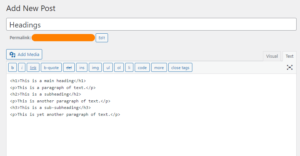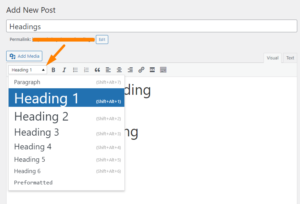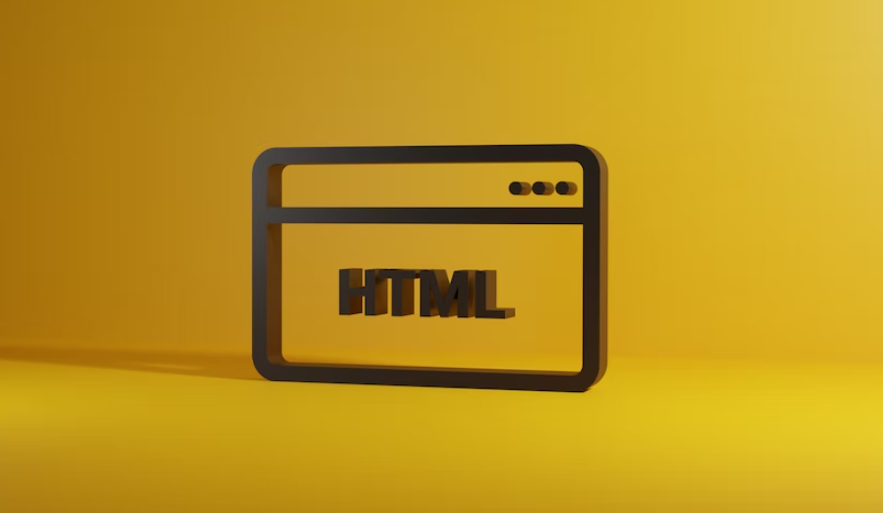Do you want to add an H1 tag in WordPress? You have come to the right place.
In this post, we will share the simple steps you should follow when adding header tags in WordPress. We will share what header tags are and why you should use them in your WordPress blog. Read on, and we will share the best practices for header tags.
Headings are important because they make any print or screen readable. This is because they serve as visual cues, which make the essence of an article obvious.
It is important to note that readers skim through content to find headings that interest them. Readers mostly pay attention to the portions they are interested in. Therefore, you should use headings or titles to improve readability and SEO.
What Are Heading Tags, and Why Should You Use Them?
Heading tags are HTML tags used to define headings and subheadings on a web page. They range from <h1> to <h6>, with <h1> being the largest and most important heading and <h6> being the smallest.
Using heading tags correctly helps structure a web page’s content and makes it easier for search engines and users to understand the hierarchy of information on the page. For example, a <h1> tag should be used for the main title of a web page, while subheadings within the page might be marked up using <h2> or <h3> tags.
It is essential to use heading tags logically and consistently, with the most essential headings being marked up using the largest tags (e.g., <h1>) and less important subheadings being marked up with smaller tags (e.g., <h2>, <h3>, etc.).
The title tag holds the key to unlocking the relevance of your web page for both human users and search engines. It is essential to craft a distinct title that accurately reflects each page’s content to ensure they have a significant impact.
Heading tags, on the other hand, provide search engines with a roadmap to the internal structure of your content, highlighting the relationships between various text blocks.
Incorporating keywords within these heading tags give search engines an added boost to identify the relevance of your content. This leads to an improvement in your search engine rankings.
While it may be an exaggeration to claim that heading tags are the sole determining factor in SEO rankings, it’s fair to say that they do play an important role.
The trend in recent years has been towards prioritizing authoritative content as a ranking factor, but using heading tags can still give your content an extra edge in the eyes of search engines.
By making it easier for search engines to locate keywords, heading tags provide a simple and effective way to boost the SEO value of your web pages.
4 Easy Ways to Add H1 Tag in WordPress
It is straightforward to add an H1 tag in WordPress. Here are the four easy ways to do it:
1. Manually Type H1 Tag in the Text Editor
Here’s an example of how the H1 tag can be added manually in the text editor:
2. Using the Visual Editor
You can use the options in the toolbar to add H1 tags or other header tags.
3. Using Keyboard Commands.
You can use the keyboard commands to add header tags. Use Alt+Shift+Numbers 1-6. Use Alt+Shift+7 to remove the heading tag or retype the same order.
4. Using Octothorpe or Hash keys
# followed by text – H1 tags.
## followed by text –H2 tags.
### followed by text – H3 tags.
###### followed by text – H6 tags.
WordPress Heading Tags – Best Practices
Here are the essential things you should know about header tags:
- You should use only one H1 tag for a page.
- It would be best if you use H1-H3 header tags on most pages. However, if the page is text heavy, we recommend using H4-H6 tags.
- It is important to maintain hierarchy when using header tags. Do not skip any level.
- Always ensure your keyword is included in the H2 tag. This is because search engines look for keyword presence in the titles and the keyword density.
- Limit the number of words in your headings. Only include the essential details the reader should know.
- Do not use the same keywords in heading tags of different web pages of your WordPress website.
- Do not use header tags to make elements stand out. You can use CSS to achieve this.
Frequently Asked Questions on Heading Tags
Here are some frequently asked questions (FAQs) about heading tags in HTML:
1. What are header tags in HTML?
Header tags in HTML are used to define headings and subheadings on a web page. They range from <h1> to <h6>, with <h1> being the largest and most important heading and <h6> being the smallest.
2. Why are header tags important for SEO?
Header tags provide structure and hierarchy to the content on a web page, which makes it easier for search engines to understand the relevance of the content. Incorporating keywords within header tags can also improve search engine rankings by making it easier for search engines to identify the relevance of the content.
3. How many header tags should I use on a web page?
It’s recommended to use one <h1> tag for the main heading of the page and to use the other heading tags (<h2>, <h3>, etc.) to define subheadings within the page. It’s also recommended to use heading tags consistently and in a logical manner, with the most important headings being marked up with the largest tags (e.g., <h1>) and less important subheadings being marked up with smaller tags (e.g., <h2>, <h3>, etc.).
4. Can I use the same header tag multiple times on a single page?
Yes, you can use the same header tag multiple times on a single page, but it’s recommended to use header tags consistently and logically to ensure that the content is structured and easy to understand for both users and search engines.
5. Do header tags affect the appearance of the text on the web page?
Yes, header tags affect the appearance of the text on the web page. By default, header tags are displayed in larger font sizes and bold text, making them stand out from the rest of the content on the page. However, the appearance of header tags can be customized using CSS.
Conclusion
By now, we are sure you can add an H1 tag in WordPress. As you have seen, it is not a complicated process.
Using heading tags on web pages is important to improve readability and search engine visibility. You must ensure all the titles are contextual to stress the importance of the content.
We hope this post helped you learn more about adding an H1 tag in WordPress. You can also check out How to Easily Add Box Shadow in WordPress {Explained}.
